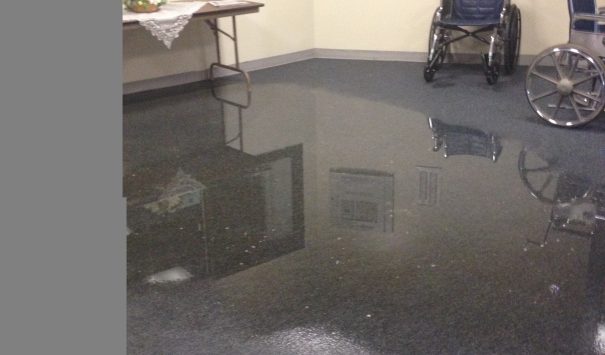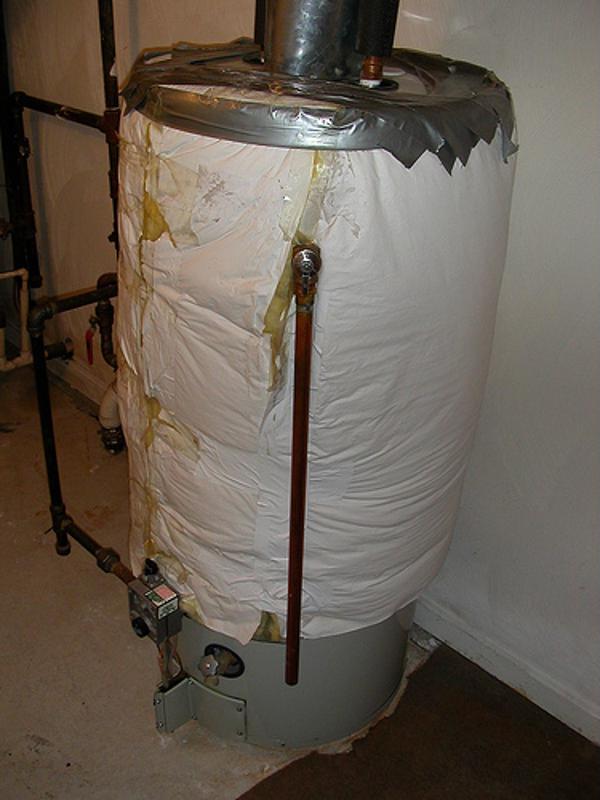What're your opinions about Water Heater Burst?

Whether it is situated in the cellar or a separate room, broken water heating units can cause stress and anxiety. Having no warm water supply is also troublesome.
Call the Plumber
After doing the first two safety actions, you should call your plumber to come right away to take care of a burst water heater. Nonetheless, bear in mind that your system will certainly not just collapse considerably overnight. There are normally signs that your aging water heater has sediment build-up in the inside. Bear in mind of the following:
Don't wait for major flooding to call the plumber. Already, you will certainly have to invest even more to recover your property. Instead, as quickly as you find these indicators, have an expert involved examine your hot water heater container. Generally, water heaters have a life-span of concerning 8 to 12 years. With routine inspection as well as maintenance, you can prolong its life.
Cut Off the Cold Water Supply
Cut off the containers tap water supply from the resource. When your container is in excellent problem, the chilly water stops loading up when the container is full. If you can not find it or reach it, you must transform off that primary water supply line outside your residential property.
Turn Off Source Of Power
Before calling the plumber, turned off a gas water heater by transforming the temperature level dial. This is generally found on top of the thermostat. If you have a design that runs on electric power, turn off the circuit breaker. This will certainly protect against electrocution, especially if there is a leakage as water is a conductor. Generally, the heating element turns off when the water strikes a particular temperature level. With a broken container, it may malfunction. Sufficing off assures you remain safe.
Clean Up Building
After calling the plumber, file damages by taking notes and photos so you can declare your homeowner's insurance. From there, start the instant clean-up. Secure any kind of vital belongings to prevent further soaking. Eliminate any type of standing water to avoid mold and mildew and mold growth. If you have a submersible water pump, make use of that to drain the water. Otherwise, the traditional container technique will also work. Try to wipe out every little thing, consisting of walls as well as walls. Maintain them running to keep air distributing if you have an electrical fan as well as dehumidifier. This will certainly assist hinder mold development.
Keep in mind, if you notice any kind of concerns with your water heating unit, call the pros right away. You can not take this problem gently since a defective thermostat can elevate water temperature to an alarmingly high degree, leading to unintentional burns.
After doing the first 2 safety steps, you must call your plumber to come right away to take care of a ruptured water heating unit. Rather, as soon as you identify these signs, have a specialist come to inspect your water heating unit container. Before calling the plumber, shut off a gas water heating unit by transforming the temperature level dial. If you have a completely submersible water pump, use that to drain the water. Keep in mind, if you observe any type of concerns with your water heating system, call the pros right away.
8 REASONS YOUR HOT WATER HEATER IS NOT WORKING & HOW TO FIX
Water Heater Problems & Solutions
Loose or Damaged In-Line Valve
Unlike a water leak near the bottom of your water tank, a water leak on top of your system can be easily fixed. A common cause of water tank leaks includes a loose in-line valve. This is a handle that is located at the top of the water tank that is engineered to activate or deactivate the flow of water. To fix this problem, you will need to secure the nut that holds the ball or in-line valve in its location. If the leak becomes more severe once it is tightened, you will be required to travel to your local hardware store to purchase a new in-line valve for your water heater.
Damaged Pressure Relief Valve
Most types of water heaters are equipped with a pressure relief valve that is engineered to discharge pressure from the water tank when it becomes too high. If this valve on top of your water heater begins to leak, we recommend purchasing a new one online or from your local store. The process of removing and replacing pressure relief valves is not complicated.
No Warm Water
If you have an electric water heater in your home, the most typical cause of a lack of warm water is a broken heating element. Your water heater is equipped with two heating elements that are tasked with heating incoming water in the water tank. Once a heating element begins to malfunction, you will have little to no hot water to use for showering, cleaning, and laundry.
Low Supply of Hot Water
Are you continuously running out of warm water? This issue may be a byproduct of a cracked dip tube. This tube is engineered to push cold water to the base of your water tank to be heated. Once a crack or hole begins to form in the dip tube, the incoming supply of cold water may be released near the top or middle of your tank. As a result, the cold water on top of the tank will be sent to the faucets and showers in your house. This hot water heater problem can only be fixed by replacing the dip tube on your system. Since the process of installing a new dip tube is complex, we recommend calling a certified technician for help.
A low supply of warm water may also be a signal of excess sediment buildup in your water tank. As your water heater reaches the middle of its life cycle, minerals in water including magnesium and calcium will begin to collect at the base of the water tank. As the minerals continue to grow, there will be less room in the water tank to store hot water. To resolve this problem, flush your water heater to remove the excess minerals.
Water is Too Warm or Cold
If the water in your shower feels uncomfortable hot or cold, you can adjust the temperature of your water by changing the settings on your thermostat. Setting the temperature to 120 degrees Fahrenheit may help you save money on your utility bills. This is an excellent temperature to use if you’re worried about scalding or skin irritation. Does this temperature feel too cold? You may also adjust the thermostat to 140 degrees Fahrenheit to make your showers more pleasant. If your hot water heater is not working when you change the temperature, this is an indicator of a broken thermostat. Immediately find a certified plumbing or heating contractor in your area to repair or replace your thermostat.
Low Water Pressure
Low water pressure is not always caused by a malfunctioning water heater. If you live in an older home with smaller water pipes, the flow of water will be restricted prior to reaching our kitchen or bathroom skins. The only way to eliminate this hot water heater problem is to connect new ¾-inch water lines to your system. Another type of problem that may negatively impact your water pressure includes calcium deposits in water pipes.
As magnesium and calcium begin to form in your pipes, the diameter of your water lines will become smaller. As a result, the warm water from your water heater will not be able to travel in an efficient manner to your sinks or appliances. Since the process of replacing water pipes includes removing drywall, an average homeowner that does not have a plumbing license will not be able to fix this hot water heater problem.
https://www.wmhendersoninc.com/blog/8-reasons-your-water-heater-is-not-working-how-to-fix/

As a reader on What Do You Do When Your Water Heater Bursts?, I assumed sharing that excerpt was mandatory. Enjoyed reading our posting? Please share it. Help someone else discover it. We cherish reading our article about Maintaining & Draining a Water Heater.
Emergency plumbing? Choose the best.